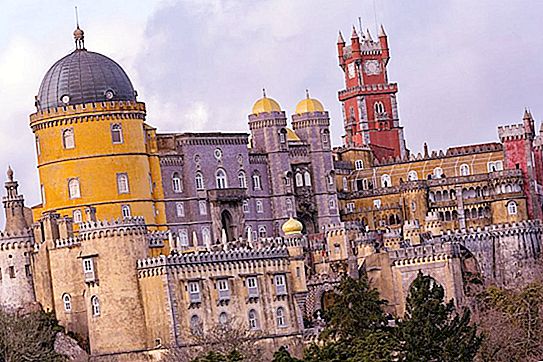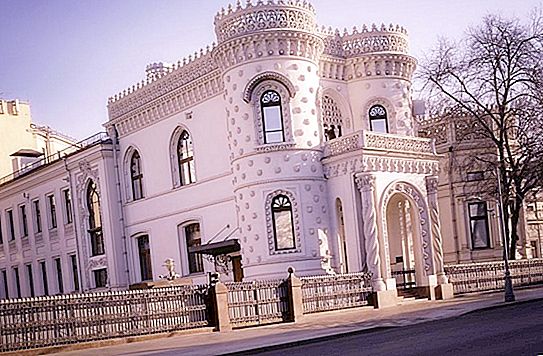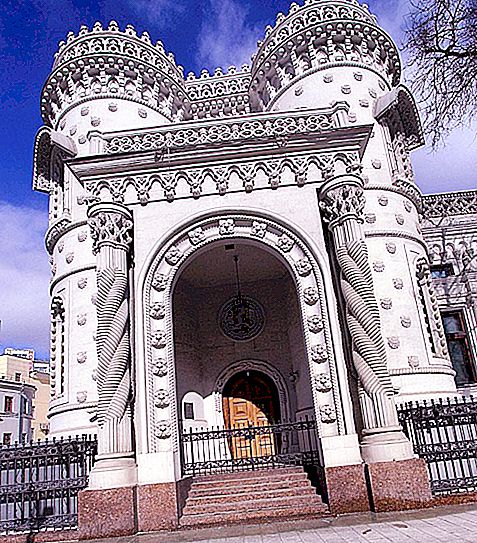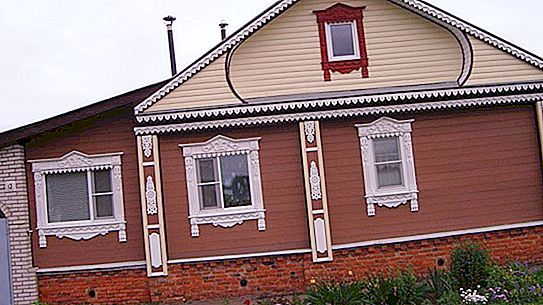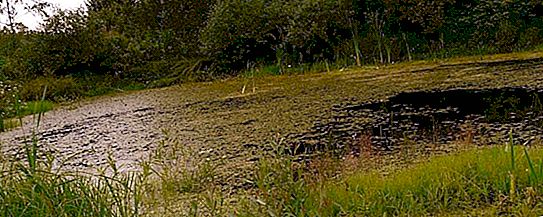The family of merchants Morozov was one of the powerful driving forces in the development of Russian industry and culture. Different branches of the family influenced statehood throughout the 19th century - they created capitalism with one hand and laid the destructive ideas of socialism with the other under it. Received a brilliant education at European universities, the heirs of the founder of the dynasty were distinguished by a sharp temper and many eccentricities. As befits every wealthy person, the manufacturers did not skimp on the construction of mansions for themselves and their families. One of the most original of Morozov’s houses was the estate on Vozdvizhenka.
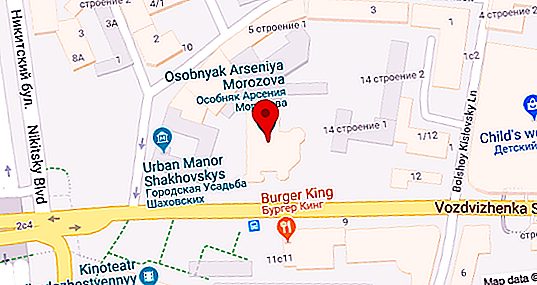
Morozovs on Vozdvizhenka
On Vozdvizhenka, two Morozov mansions, radically different in architecture, are adjacent. One of them in the neoclassical style belonged to Varvara Morozova. As the heiress of the Khludov’s textile empire, she married Abram Morozov, a manufacturer and also a textile tycoon.
After the death of her husband, she successfully managed the Tver Manufactory, was engaged in charity work, led an active social life and was the mother of three sons. The youngest of them, Arseny Morozov, received as a gift a piece of land next to his mother’s house and built a house much later than his mother’s estate.
The project of Morozova’s house on Vozdvizhenka was created by architect R. Klein, this was his first independent work. The two-story city estate was built in 1888. The front facade of the house faces Vozdvizhenka and is separated from the street by a small garden with a fountain. Two lateral risalits with porticoes stand out in the design, stylized figures of griffins and stone lilies serve as their decoration. The house rests steadily on a high foundation and is somewhat similar to a stylized Italian palazzo, at least, contemporaries thought so.
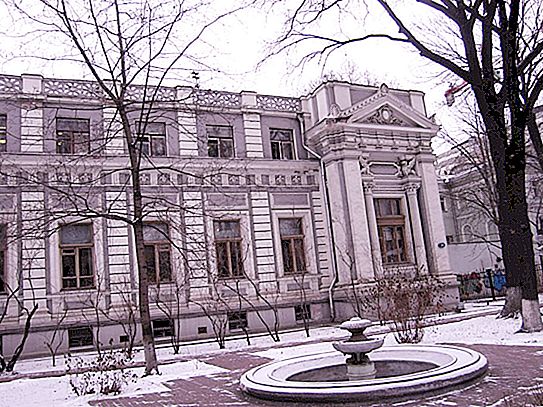
On two floors of Morozova’s house on Vozdvizhenka, 23 rooms were designed. The main hall accommodated up to 300 guests, and on special days up to 500 people. Additional areas were in the basement, there were 19 rooms. With the light hand of the hostess, the house became a fashionable salon, where progressive thinkers, aristocrats of the spirit, writers, philosophers gathered for dinner. Until the end of her days, Varvara Morozova was known as a liberal and supported progressive ideas that she did not like the current government, and therefore secret police surveillance was not removed from her until her death.
Before the revolution, she did not live quite a bit - she died in September 1917, according to contemporaries, the new way would have suited her. In memory of Varvara Morozova, there was a public library in Moscow, the Morozovsky town in Tver, a hospital for the mentally ill, a cancer institute, a vocational school, and much more.
Search for an idea
Today, Morozova’s mansion belongs to the Presidential Administration, and there are receptions for foreign delegations. The house itself, the gatehouse and the outbuildings attached later were completely preserved from the historical complex, designed by architect V. Mazyrin. This master became the author of one of the most striking buildings in Moscow, built for the son of Varvara Morozova - Arseny.
This offspring of the merchant family did not stand out. His only passion was traveling. Having received from his mother in 1895 a birthday present, an impressive piece of land located next to her mansion, Arseny Morozov decided that he needed to build a house, but he had no concrete ideas. An order for the project was given to Viktor Mazyrin, but the owner did not receive any instructions on what the future mansion would look like.
It was decided to draw inspiration from a joint trip, a role model was not found immediately. In the Portuguese town of Sintra, the heir to the Morozovs liked the Palacio de Pena palace, built in the 19th century for local monarchs. It was not necessary to build a building in Moscow on such a scale as the Royal Palace in Portugal, but both participants of the trip liked the idea of creating a house in the pseudo-Moorish style.
Architectural scandal
It is impossible to attribute the appearance of the building to any direction of the architectural style, its eclecticism and bright personality made Morozov's house one of the most memorable sights of the capital. Construction began, tentatively, in 1897 and was completed as soon as possible. Two years later, Morozov’s house was already surprising, teasing, shocking the whole of Moscow with its unusualness.
Even during the construction process, the mansion was subjected to sharp and caustic criticism from the side of the world and the press. The mother’s reaction was also unambiguous, Arseny was amused by all the attacks, retelling all the gossip, he mentioned the words of V. Morozova: “I used to know that you were a fool, but now all of Moscow knows.” This phrase became legendary not without the participation of Arseny, and the rest of the relatives did not stand aside.
The house of Morozov caused uncles and brothers of a large family of attacks, but the young heir, prophesying, replied that his house would remain forever, and that no one knew what would happen to their collections. Literary Moscow gladly paced the witticisms of the appearance of the house - actor M. Sadovsky dedicated a caustic epigram to the mansion, Leo Tolstoy immortalized him in the novel “Resurrection”. Probably, the famous Morozovsky eccentricity manifested itself in Arseny’s construction of a shocking house, forcing Moscow and the whole of Russia to race for hundreds of years to discuss the dynasty. Even today, representatives of this merchant family are of genuine interest.
Description
The facade of the mansion is decorated with shells, experts admit that this element of the Plateresque style decor was borrowed by Mazyrin in Spain from the main attraction of the city of Salamanca - Casa de las Conchas. It is believed that shells bring happiness and good luck. For the Moorish style in the design of the main entrance, there are two symmetrically located towers crowned with intricate teeth in the form of a crown and belted around the upper perimeter by elaborate carvings.
On both sides of the arch, in front of the doorway, there are two columns in the form of three intertwined ship ropes, and around the door there is carved decor of ropes tied with nautical knots - an element that brings good luck according to Portuguese beliefs. Two more symbols of luck are installed above the main entrance - a horseshoe, as a tribute to Russian traditions, and a captive dragon, which is a symbol of the East and Asia. All the facades of this amazing mansion are surrounded by realistic-made ropes, knotted in places.
Today it’s almost impossible to get into the rooms of Morozov’s house, but there is some information about the interior. The owners of millions of capitals, when asked about how to decorate their chambers in what style, often answered: "In all." Fashion for all styles was established in the late 19th and early 20th centuries very firmly. So, the ballrooms were finished like Greek palaces, the bedrooms corresponded to the Rococo style or the boudoir in the spirit of Louis IV, in the men's rooms hunting symbols welcomed.
What's inside
Morozov’s house supported the direction of mixing styles, but the choice of subjects for the halls was made by an extravagant host very intricately. The lobby was dedicated to Morozov's other favorite pastime - hunting. When Arseny Abramovich was here, the stuffed bears he had hunted stood here, the heads of the killed wild boars, elks, and deer showed off under the ceiling, there was a place in the collection for squirrels.
The decor of the space above the massive fireplace depicts all kinds of weapons (bows, crossbows), hunting accessories (horns, falcons) and a symbol of successful hunting - two oak branches pulled together by a tight rope knot. They say that a tame lynx roamed the hall.
The rest of the rooms are also pompous and elaborate. Luxury was visible in every corner - a magnificent mirror in a gilded frame in the former boudoir, luxurious stucco molding and ceiling painting in many rooms remained intact.
After Morozov
Today, foreign delegations are hosted at Morozov’s house, so they do not conduct excursions here, and rare journalists are allowed only in a few rooms. According to the memoirs of contemporaries, the owner of the house was hospitable and often arranged feasts. It was not difficult to assemble a society - philanthropic uncles quickly united the theater elite and made up a fun company. At parties, performances were given, songs were sung, gossip was discussed and things were turned around.

Arseny Morozov never changed his nature, his death had the tinge of a vaudeville - having shot a foot at a hunt for an argument, he did not frown and told his friends that he did not feel pain, he learned this skill in spiritual practices. What became the final point of his life is not clear, according to some stories, he bled, according to others, he was infected due to an untreated wound that caused gangrene.
After the revolution, the mansion was nationalized. In the early years, the headquarters of the anarchists were located in the house, later the Proletkult Theater, where the performances of Meyerhold and Eisenstein were staged. In the pre-war years, the palace was given to the Embassy of Japan, and after that to the Embassy of India. Until 2003, the House of Peoples' Friendship was found in the rooms of Morozov’s house. After the restoration, the building was transferred to the Government of the Russian Federation and is used to receive foreign delegations, representative and government negotiations, international conferences, etc.
Other Morozovs, Suzdal
The surname Morozov for many at some subconscious level is strongly associated with success and quality. The Morozov manufactories invariably produced excellent products, as contemporaries said, they could be taken with eyes closed, no one doubted consumer properties. And not only in Russia, but also in many foreign countries.
The merchant dynasty was branched out and the Morozov museum of museums were spread all over Russia - in the village of Glukhovo (Noginsk Region), in Syktyvkar, Moscow, St. Petersburg and other cities. They left behind well-equipped factories that used advanced production technologies and demonstrated an integrated approach to project implementation, starting with the idea and ending with the arrangement of workers' lives.
Today, the namesakes of the merchants have some credit of trust, which has grown from historical memory, sometimes this is unjustified, but it is always a plus for the entrepreneur. Morozov Guest House in Suzdal is a successfully developing, so far small, hotel.
Guests are invited to settle in one of three rooms of different levels of comfort. The convenient location in the historical and business center of the city allows tourists to fully immerse themselves in the interesting area of life of the modern metropolis. It is convenient for business people to solve current issues without wasting time on long journeys, and tourists immediately fall into the focus of historical events and ancient architecture. Hotel address: Krasnoarmeysky Lane, building 13. Arrival with animals is permissible.
Hospitality in Adler
The guest house on Morozova in this city is a hotel 400 meters from a well-maintained beach. For vacationers, 20 rooms are equipped with different capacities from one to five. Comfort is provided by household appliances, air conditioning and a toilet in each room, the kitchen is shared, there is a barbecue area on the territory of the house, a playground is arranged.
It also offers laundry, ironing room, round-the-clock access to wi-fi. By public transport you can reach the Olympic Park in 10 minutes. The guest house (67 Pavlik Morozov St.) in Adler is an excellent solution for a budget holiday with children. If necessary, the administration provides a free transfer from the railway station or airport. Room rates start from 2 thousand rubles per person per day.

